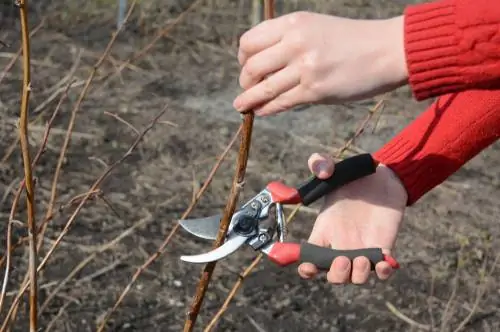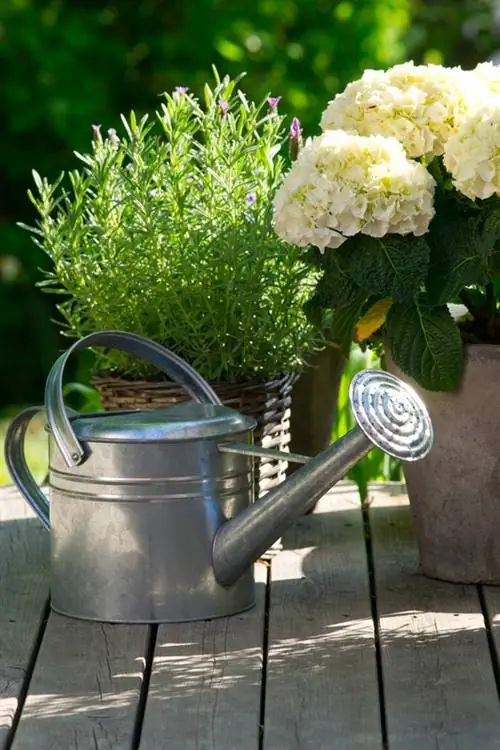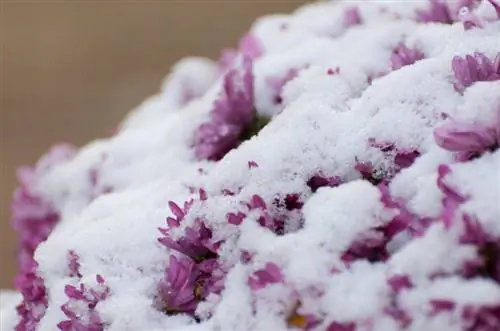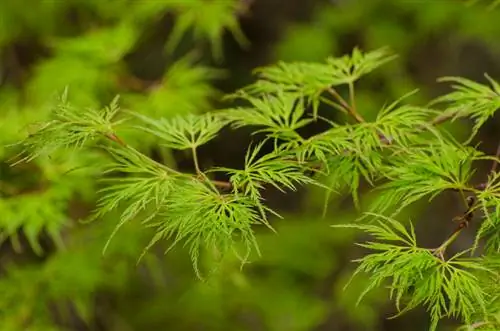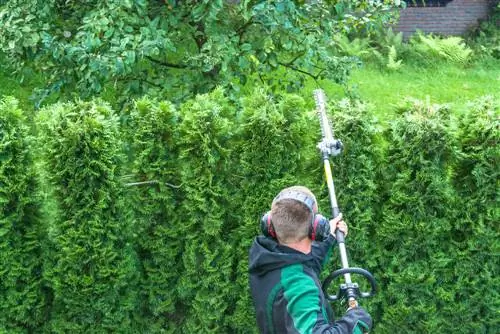- Author admin [email protected].
- Public 2023-12-16 16:46.
- Last modified 2025-01-23 11:19.
Many bushes depend on regular pruning so that they thrive vitally, he althily and beautifully. The right time depends primarily on the flowering time. Beginners to pruning care will appreciate that most shrubs benefit from consistent pruning. Read this guide on how to skilfully cut bushes.
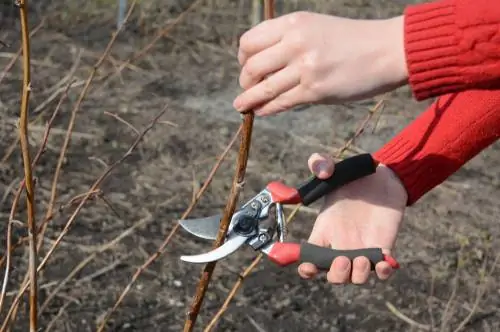
When should you trim bushes?
The timing of pruning bushes depends on their flowering time: cut summer-flowering bushes in late winter to promote the buds on the young wood. Spring-flowering bushes should be cut after flowering in the summer so as not to remove the flower buds that were planted the previous year.
Cutting summer-flowering bushes in winter
Summer-flowering bushes are very popular thanks to uncomplicated pruning care. The buds for this year's flower symphony appear on the young wood that sprouts from spring onwards. This category includes popular flower beauties such as butterfly lilac (Buddleja davidii), summer spar (Spiraea japonica) and panicle hydrangea (Hydrangea paniculata).
The best time to prune bushes that bloom in summer is in late winter. If there is no longer any risk of freezing frost between the beginning of February and the beginning of March, cut these bushes back. The amount of cutting depends on your personal assessment and the variety-specific attributes, because you don't have to worry about accidentally cutting off valuable flowers.
Cutting spring-flowering bushes in summer
Spring-flowering bushes are spared from pruning in late winter. The trees had already put on their flower buds in the summer and autumn of the previous year. If you let the scissors circle in February, you will look in vain for the longed-for flower fairytale in spring.
The best time to prune spring-flowering shrubs is after the flowering period. Cut back heralds of spring such as weigela (Weigelia), Mayflower bush (Deutzia) or golden bells (Forsythia) a little in summer. As long as you limit yourself to this year's growth and withered flowers, you continue to act in accordance with the Federal Nature Conservation Act.
Cutting instructions
Regardless of individual variety characteristics, the expert cutting follows a proven basic scheme. The goal is airy, light-flooded growth. When the sun's rays penetrate deep into a bush, vitalizing photosynthesis ensures a dense cover of leaves. How to trim bushes correctly:
- Always thin out dead, frozen and stunted branches at the beginning
- Clean out wilted flowers until just before a bud, leaf node or leaf
- Cut off dead wood on a branch or at ground level
- Cut back or completely remove shoots that grow laterally and protrude out of shape
- Cut away the weakest specimens from branches that are too close together
Cardinal mistakes when cutting bushes are gaps and holes in their appearance. This shortcoming can be avoided by cutting back excessively long branches using a derivation path. With this cutting technique, you don't cut just anywhere, but at the fork to a young, well-positioned side shoot.
Tip
Rose bushes have a special position when it comes to pruning care. Roses that bloom more often receive their main pruning in spring, followed by light care pruning in summer. When the forsythia is blooming, cut your roses back heavily to just a few eyes. After the first bloom, clean out withered rose petals to pave the way for another generation of buds and a blooming season that lasts until fall.

